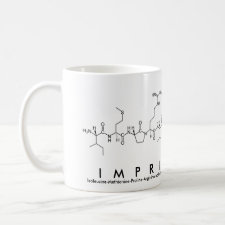
Authors: Queirós RB, Silva SO, Noronha JP, Frazpo O, Jorge P, Aguilar G, Marques PVS, Sales MGF
Article Title: Microcystin-LR detection in water by the Fabry-Pérot interferometer using an optical fibre coated with a sol-gel imprinted sensing membrane.
Publication date: 2011
Journal: Biosensors and Bioelectronics
Volume: 26
Issue: (9)
Page numbers: 3932-3937.
DOI: 10.1016/j.bios.2011.03.015
Alternative URL: http://www.sciencedirect.com/science/article/B6TFC-52FVDDT-3/2/944f93838528ccc0df706b708db18945
Abstract: Cyanobacteria deteriorate the water quality and are responsible for emerging outbreaks and epidemics causing harmful diseases in Humans and animals because of their toxins. Microcystin-LR (MCT) is one of the most relevant cyanotoxin, being the most widely studied hepatotoxin. For safety purposes, the World Health Organization recommends a maximum value of 1 μg L-1 of MCT in drinking water. Therefore, there is a great demand for remote and real-time sensing techniques to detect and quantify MCT. In this work a Fabry-Pérot sensing probe based on an optical fibre tip coated with a MCT selective thin film is presented. The membranes were developed by imprinting MCT in a sol-gel matrix that was applied over the tip of the fibre by dip coating. The imprinting effect was obtained by curing the sol-gel membrane, prepared with (3-aminopropyl) trimethoxysilane (APTMS), diphenyl-dimethoxysilane (DPDMS), tetraethoxysilane (TEOS), in the presence of MCT. The imprinting effect was tested by preparing a similar membrane without template. In general, the fibre Fabry-Pqrot with a Molecular Imprinted Polymer (MIP) sensor showed low thermal effect, thus avoiding the need of temperature control in field applications. It presented a linear response to MCT concentration within 0.3-1.4 μg L-1 with a sensitivity of -12.4 ± 0.7 nm L μg-1. The corresponding Non-Imprinted Polymer (NIP) displayed linear behaviour for the same MCT concentration range, but with much less sensitivity, of -5.9 ± 0.2 nm L μg-1. The method shows excellent selectivity for MCT against other species co-existing with the analyte in environmental waters. It was successfully applied to the determination of MCT in contaminated samples. The main advantages of the proposed optical sensor include high sensitivity and specificity, low-cost, robustness, easy preparation and preservation
Template and target information: microcystin-LR
Author keywords: microcystin-LR, molecular imprinting, sol-gel, Fabry-Pérot interferometer, Freshwater



Join the Society for Molecular Imprinting

New items RSS feed
Sign-up for e-mail updates:
Choose between receiving an occasional newsletter or more frequent e-mail alerts.
Click here to go to the sign-up page.
Is your name elemental or peptidic? Enter your name and find out by clicking either of the buttons below!
Other products you may like:
 MIPdatabase
MIPdatabase









